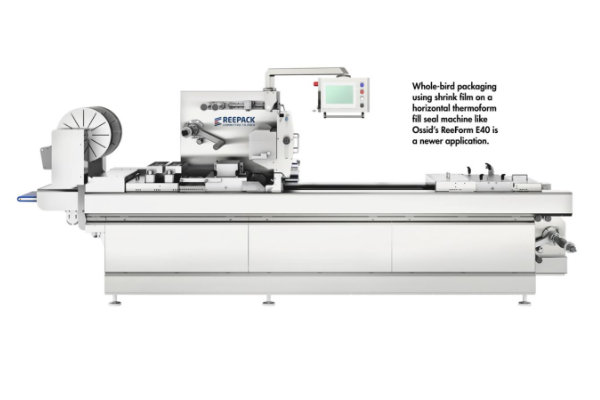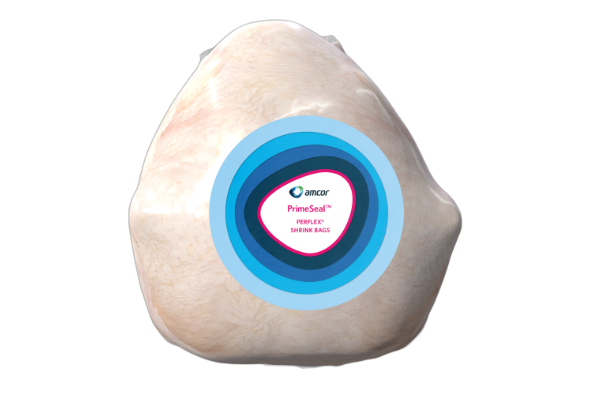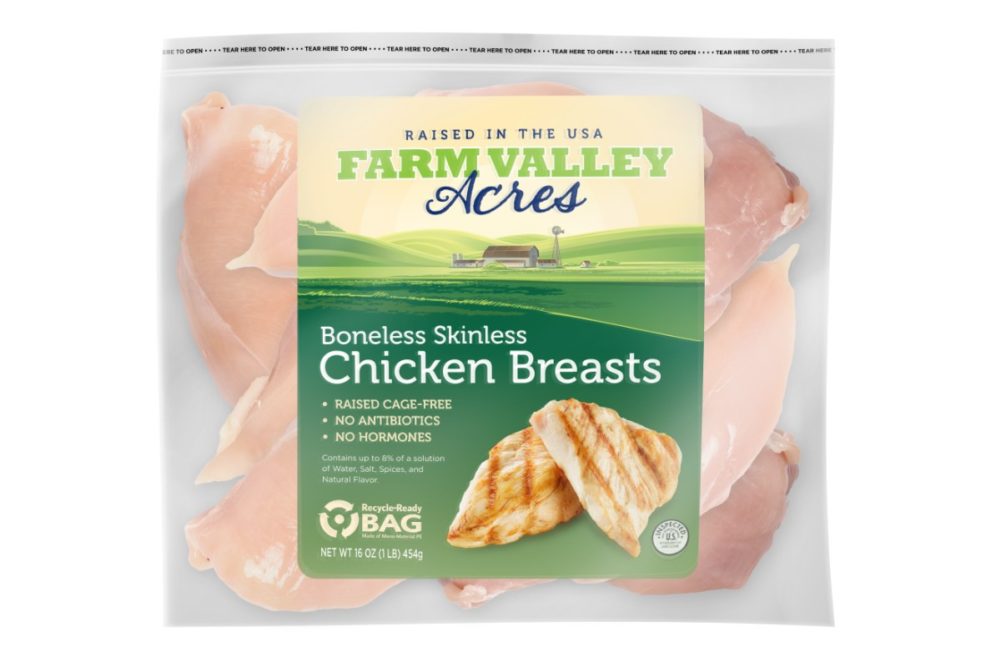Whole bird packaging requires less processing time, potentially a smaller head count, and the ability to be more automated, and the category has shown surprising strength in 2022 despite rising prices.
The big question for those involved in packaging for whole-bird applications this year has been, “How can we package these products with less people?”
“This is such a challenge for producers, and they are looking for any and all solutions that can meet this need,” said Ryan Spencer, product market manager for chamber, portioning and slicing for Multivac Inc., Kansas City, Mo. “Despite the overall wider trend of growth in further processing and parts and pieces, whole-bird is still an important segment.”
Melanie Bandari, senior marketing manager for Amcor Flexibles North America, Oshkosh, Wis., noted that while dollar sales year-over-year are up for all cuts of chicken, whole-bird sales are the weakest performer in the total chicken category, so differentiation is valuable.
“Therefore, communicating sustainability benefits on pack in simple language that consumers can grasp is very important in the space,” she said. “Eighty-five percent of consumers will consume the same amount or more fresh chicken at home in the next six to 12 months, so there is great opportunity.”
New packaging innovation in this space includes enhanced graphics showing sustainability claims with high-end printing, labor saving packaging and enhanced features for the consumer, i.e., handle bags, ESL (extended shelf life) and sustainable packaging.
Chad Deaton, product line manager for Ossid Horizontal Packaging, Battleboro, NC, noted HFFS whole-bird packaging is growing in popularity in European markets and is likely making its way to the United States.
New and Improved
Michael King, technical solutions manager for Weber, Kansas City, Mo., noted packaging whole birds in a shrink application on a thermoformer (wePACK 7000) involves special handling of the shrink film, so the company has equipped the wePACK 7000 tooling with insulating properties to apply heat only where needed and kept away from heat sensitive areas.
“We like to have as much of the whole bird above the web line to decrease the amount of excess film trim around the bird; this gives a great product presentation post shrink tunnel,” he said. “We also have servo-controlled forming and sealing film off winds that work in perfect synchronization with the index of the machine. This greatly reduces the stress or stretch of the shrink material being used, which has the tendency to stretch and ‘hourglass.’ Our servo-controlled systems greatly reduce the issues that can be attributed to these stretchy shrink films.”
Deaton shared that the newest trend Ossid has seen and tested for whole-bird applications is the use of shrink film on a horizontal thermoform fill seal machine.
“Run in a 2-1 (or two birds at a time sequence), the packaged products would proceed through a shrink tunnel following the HFFS machine,” he said. “This has been tested on smaller whole chickens. While it’s likely possible to do with whole turkeys, it would prove to be more difficult with the typically larger size bird.”
One change Ossid made to the HFFS equipment to achieve this whole-bird packaging application was the use of sealing head movement.
“The head essentially ‘gets out of the way’ to seal the top and bottom film together,” Deaton explained. “The shrink film used in our whole chicken testing was multilayered, thermoformable, and heat shrinkable. It was also pre-printed.”
This pivot to HFFS packaging of whole birds allows for significantly more throughput when compared with vacuum chamber machines.
“The biggest difference with chicken and turkey is the size constraints,” Deaton said. “HFFS tooling can be custom made with guidance from our in-house experts to best fit the customer’s application and final package presentation.”
Amcor’s new Perflex S Grab n Go handled shrink bags enhance consumer convenience with a new carrying handle for an easy way to lift and carry birds up to 22 lbs.
“The new handle eliminates the need for netting, saving packaging materials and labor in the production process,” Bandari said. “Perflex offers a high-end gloss print with up to 10 colors on front and back showcasing the product’s sustainability or features while standing out on shelf.”
Additionally, the company’s Form-Tite thermoforming shrink film for HFFS equipment and Flow-Tite shrink rollstock for horizontal or vertical flow wrapping can reduce labor requirements up to 60% by reducing manual steps in the packaging process.
Multivac’s newest belted chamber machine, the B425, was designed for high-volume packaging of smaller products such as whole chickens and turkeys.
“It has a narrower chamber, which reduces the amount of ‘dead volume’ inside the chamber, making for a faster cycle time and higher output,” Spencer said. “We also have our new Multivac Pouch Loader which is a conveyered loading assist solution for easily getting products into pouches and onto the packaging machine.”
 Source: Ossid
Source: Ossid
Equipment advancements
The equipment being utilized for packaging of whole-bird applications has evolved considerably in recent years.
“There are several new machinery advancements that have applicability for whole birds,” Bandari said. “On-demand bagging with ModaBag provides labor savings, reduced fuel costs, and inventory space reduction due to the ability to fit more bags on a pallet. The ModaBag is an in-line vacuum shrink bag maker and printer, which produces bags from rolls of unprinted tubing. Shipping tubing significantly saves on trucking and warehouse space, with the added savings of eliminating the pouching operation.”
Amcor also provides flat shrink rollstock which runs through horizontal form fill seal wrappers, such as the commercial Harpak Ulma and ModaPac systems. These machines can shrink overwrap whole birds and eliminate the need for pre-made bag solutions for significant labor savings.
 Amcor's Perflex shrink bags enhance consumer experiences with many features and offer processors savings and flexibility. (Source: Amcor)
Amcor's Perflex shrink bags enhance consumer experiences with many features and offer processors savings and flexibility. (Source: Amcor)
Looking ahead
Considering current supply chain issues, increased shelf-life is of paramount importance.
According to King, moving from pre-made bag systems to thermoforming not only gives a better product presentation and offers material cost reductions, but also provides a significant labor reduction running a thermoformer versus a pre-made bag system.
Multivac continues to develop new and innovative ways to make packaging lines for whole birds that are faster, easier to use, and which require less labor to operate.
“I think the state-of-the-art is highly connected so important data can be conveyed not only to line operators but any key personnel anywhere, even if they are out of office or out of the country,” Spencer said. “It is also easier to use, so less experienced and knowledgeable operators can still create high-quality packages with the help of software intelligence and machine self-adjustment.”

